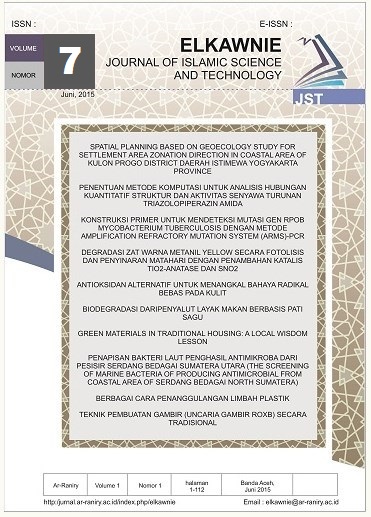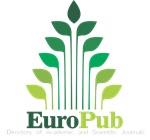Digital Trail Awareness in Islamic Perspective
DOI:
https://doi.org/10.22373/ekw.v7i2.11706Keywords:
digital, trace, trail, multi-hop, awarenessAbstract
Abstract: The growing popularity of the internet has a significant impact on people's attitudes. The Covid-19 pandemic has accelerated a cultural, ethical, and normative change in people's behavior. The potential for social change resulting from the emergence or advancement of information and technology is significant. The rise of social media, which has now become a common form of communication, is unavoidable. Digital communication through a variety of websites to obtain information will leave digital traces. The concept of a digital trail certainly reaffirms what has previously been written in Al-Qur'an, Surah Yasin: 65. This verse is relevant to digital multi-hop tracks that outline human actions and behavior to the swipe of their fingers. The verse is translated through the use of a digital trail that is connected to internet access. This library research study uses the source triangulation method to analyse exploratory qualitative content. The study's findings indicate a correlation between the digital trail and Surah Yasin 65, demonstrating that current digital technology proves that the Qur'an's nash or verses are consistent with the unquestionable assumption of human rationality. It also emphasizes the importance of being cautious and responsible when using digital platforms.
Abstrak: Tren peningkatan penggunaan internet memberikan pengaruh besar terhadap perilaku masyarakat. Pandemi Covid-19 mengakselerasi pergeseran pola perilaku masyarakat baik dari segi budaya etika maupun norma yang ada. Potensi terjadinya perubahan sosial sebagai konsekuensi lahir atau berkembangnya teknologi informasi sangat besar. Kemunculan media sosial yang kini sudah menjadi hal yang umum dalam berkomunikasi memang tak dapat dihindarkan lagi. Jalur komunikasi di era digital yang melalui berbagai proses untuk mendapatkan informasi akan meninggalkan jejak-jejak digital atau digital footprint. Potret jejak digital ini tentunya menegaskan kembali apa yang telah dituliskan dalam Al Quran pada surah Yasin ayat 65. Ayat ini memiliki relevansi dengan jejak hop digital menguraikan perbuatan dan perilaku manusia dari sentuhan jari. Ayat tersebut diterjemahkan dengan footprint digital yang terhubung dalam sebuah jaringan internet. Studi ini merupakan library research dengan pendekatan kualitatif explanatif dalam bentuk konten analisis dengan metode tringalasi sumber. Hasil studi menunjukkan bahwa terdapat korelasi digital footprint dengan Surah Yasin 65 di mana teknologi digital saat ini menjadi bukti bahwa nash yang termuat dalam Alquran sesuai dengan asumsi rasionalitas manusia yang tidak memiliki keraguan di dalamnya. Penekanan berikutnya adalah setiap individu harus cermat dan bertanggungjawab dalam mengakses platform digital.
References
Altman, E., & Jiménez, T. (2012). NS simulator for beginners. Synthesis Lectures on Communication Networks, 10, 1–186. https://doi.org/10.2200/S00397ED1V01Y201112CNT010
APJII. (2020). Laporan Survei Internet APJII 2019 – 2020 (Q2). https://apjii.or.id/
Averill, J. R. (1973). Personal Control Over Aversive Stimuli and Its Relationship to stress. Psychological Bulletin, 80(4), 286–303. https://doi.org/10.1037/h0034845
Bodhani, A. (2012). Shops Offer The e-Tail Experience. Engineering & Technology, 7, 46–49. https://doi.org/10.1049/et.2012.0512
Gallup. (2019). Gallup 2019 Global Emotions Report. Retrieved online from https://www.gallup.com/analytics/248906/gallup-global-emotions-report-2019.aspx?thank-you-report-form=1
Hadi, S. (2002). Methodology Research. Andi Offset.
Hagger, M. S., Zhang, C.-Q., Kangro, E.-M., Ries, F., Wang, J. C. K., Heritage, B., & Chan, D. K. C. (2021). Trait Self-Control and Self-Discipline: Structure, validity, and invariance across national groups. Current Psychology, 40(3), 1015–1030. https://doi.org/10.1007/s12144-018-0021-6
Karabatak, S., & Karabatak, M. (2020). Z Generation Students and Their Digital Footprints. 8th International Symposium on Digital Forensics and Security, ISDFS 2020. https://doi.org/10.1109/ISDFS49300.2020.9116455
Kasetyaningsih, S. W., & Hartono. (2017). Dampak Sosial Media Terhadap Akhlaq Remaja. IPTEK-KOM, 13(1), 9. Retrieved from https://jurnal.kominfo.go.id/index.php/iptekkom/article/view/3930/1547
Kaspersky.com. (n.d.). What is a Digital Footprint? Retrieved November 25, 2021, from https://www.kaspersky.com/resource-center/definitions/what-is-a-digital-footprint
Katadata.co.id. (2019). Berapa Pengguna Media Sosial Indonesia. Retrieved online from https://databoks.katadata.co.id/datapublish/2019/02/08/berapa-pengguna-media-sosial-indonesia
Kominfo.go.id. (2017). Ada 800000 Situs Penyebar Hoax di Indonesia. Retrieved online from https://kominfo.go.id/content/detail/12008/ada-800000-situs-penyebar-hoax-di-indonesia/0/sorotan_media
Kompas. (2021). Jumlah Pengguna Internet Indonesia 2021 Tembus 202 Juta. Retrieved online from https://tekno.kompas.com/read/2021/02/23/16100057/jumlah-pengguna-internet-indonesia-2021-tembus-202-juta
Kristiyono, J. (2015). Budaya Internet: Perkembangan Teknologi Informasi DAN Komunikasi Dalam Mendukung Penggunaan Media Di Masyarakat. Scriptura, 5(1). https://doi.org/10.9744/scriptura.5.1.23-30
Lambiotte, R., & Kosinski, M. (2014). Tracking the Digital Footprints of Personality. Proceedings of the IEEE, 102(12), 1934–1939. https://doi.org/10.1109/JPROC.2014.2359054
Li, X., Li, D., & Newman, J. (2013). Parental Behavioral and Psychological Control and Problematic Internet Use Among Chinese Adolescents: The Mediating Role of Self-Control. Cyberpsychology, Behavior, and Social Networking, 16(6), 442–447. https://doi.org/10.1089/cyber.2012.0293
Moleong, L. J. (2007). Metode Penelitian Kualitatif. PT. Remaja Rosdakarya.
Nurhanifa, A., Widianti, E., & Yamin, A. (2020). Kontrol diri dalam penggunaan media sosial pada remaja. Jurnal Ilmu Keperawatan Jiwa, 3(4), 527–540. https://journal.ppnijateng.org/index.php/jikj/article/download/727/374
Pranajaya, P. (2020). Pemahaman Jejak Digital Di Kalangan Mahasiswa Program Studi Ilmu Perpustakaan Universitas Yarsi. Semnas Ristek (Seminar Nasional Riset Dan Inovasi Teknologi), 4(1). http://proceeding.unindra.ac.id/index.php/semnasristek/article/view/2576
Pratama, K. R. (2021). Instagram, Media Sosial Pemicu “Cyberbullying” Tertinggi. Retrieved online from https://tekno.kompas.com/read/2021/03/29/07164137/instagram-media-sosial-pemicu-cyberbullying-tertinggi
Pratiwi, E. D. (2016). Faktor Yang Mempengaruhi Niat Menggunakan Instagram Dengan The Theory Of Reasoned Action Menggunakan AMOS 21. Jurnal Teknik Komputer, 2(1), 68–77. https://doi.org/10.31294/JTK.V2I1.364
Qurtubi, A. A. M. bin A. A. (1935). Al-Jami’ Li Ahkamil Quran. Mathba’ah Darul Kitab Mesir.
Rifiani, V., Zen, M., Hadi, S., & Darwito, H. A. (2011). Analisa Perbandingan Metode Routing Distance Vector Dan Link State Pada Jaringan Packet. http://repo.pens.ac.id/677/1/1066.pdf
Salomatin, A., Iskhakov, A., & Meshcheryakov, R. (2021). Formation of a Digital Footprint Based on the Characteristics of Computer Hardware to Identity APCS Users. Proceedings - 2021 International Russian Automation Conference, RusAutoCon 2021, 314–320. https://doi.org/10.1109/RUSAUTOCON52004.2021.9537361
Soliha, S. F. (2015). Ketergantungan Pengguna Media Sosial Dan Kecemasan Sosial. Jurnal Interaksi, 4(1), 1–10. https://doi.org/10.14710/interaksi,4,1,1-10
Sukiswo, S. (2008). Evaluasi Unjuk Kerja Routing Link-State Pada Jaringan Packet Switched Menggunakan NS-2 (Network Simulator–2). Transmisi: Jurnal Ilmiah Teknik Elektro, 10(3), 138–143. https://doi.org/10.12777/TRANSMISI.10.3.138-143
Sya’rawi, M. M. (1991). Tafsir As-Sya’rawi. Akhbar Al-Yaum.
Syafrizal, M. (2005). Pengantar jaringan komputer. Andi Offset.
Taprial, V., & Kanwar, P. (2012). Understanding Social Media. Ventus Publishing.
Tarigan, A. (2009). Bikin Gateway Murah, Mudah pakai mikrotik. Info Komputer.
Tittel, E. (2002). Schaum’s Outline of Computer Networking. McGraw-Hill Education.
Wagito. (2005). Jaringan Komputer :teori dan implementasi berbasis linux. Gava Media.
Zuhaili, M. M. (2006). al-Wajiz fi Ushul Fiqh Islam. Darul Khaer.
Downloads
Published
Issue
Section
License
Proposed Policy for Journals That Offer Open Access Authors who publish with the Elkawnie journal agree to the following terms:
a. Authors retain copyright and grant the journal right of first publication with the work simultaneously licensed under a Creative Commons Attribution License that allows others to share the work with an acknowledgement of the work's authorship and initial publication in this journal.
b. Authors are able to enter into separate, additional contractual arrangements for the non-exclusive distribution of the journal's published version of the work (e.g., post it to an institutional repository or publish it in a book), with an acknowledgement of its initial publication in this journal.
c. Authors are permitted and encouraged to post their work online (e.g., in institutional repositories or on their website) prior to and during the submission process, as it can lead to productive exchanges, as well as earlier and greater citation of published work (see The Effect of Open Access).

























